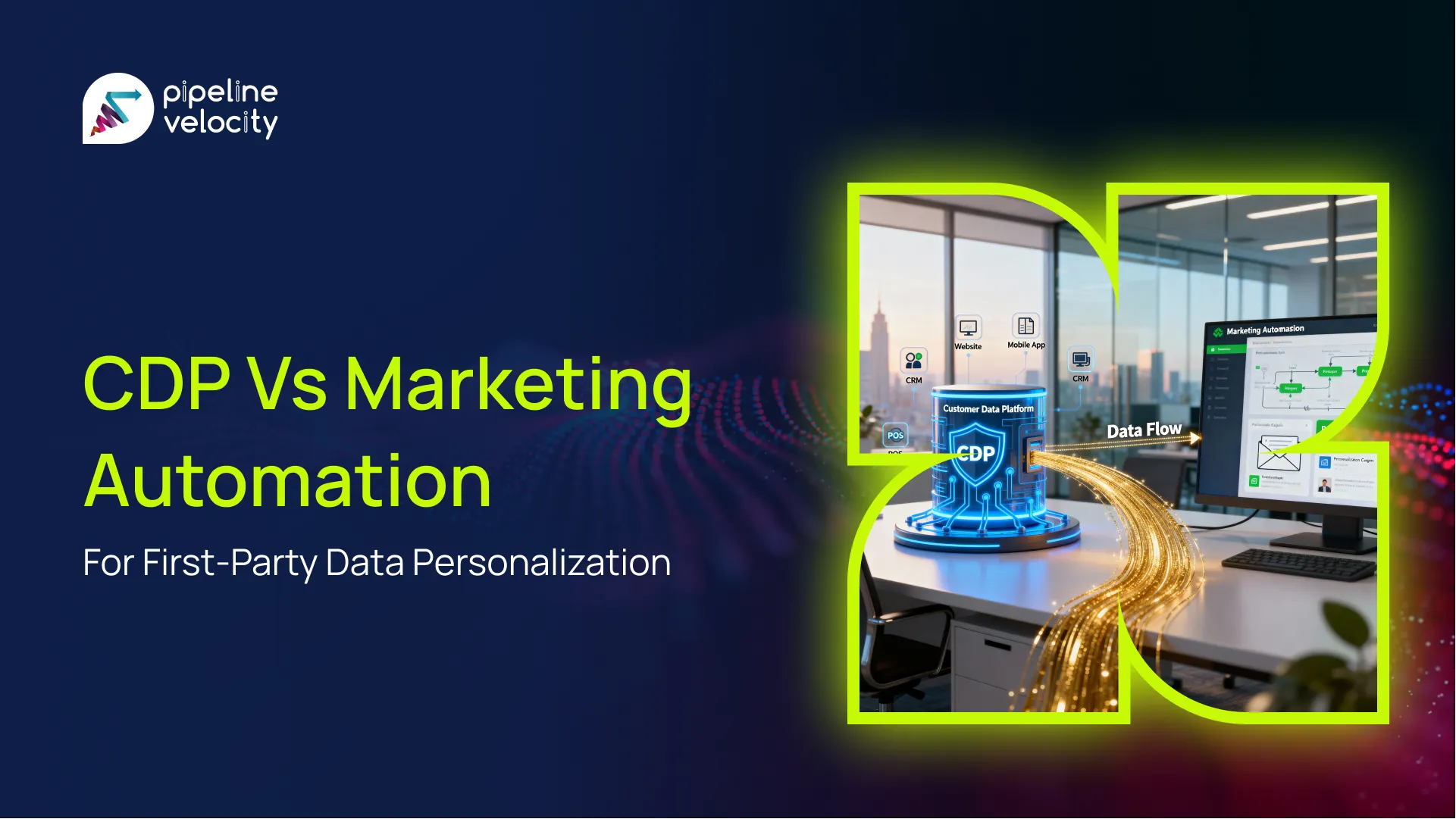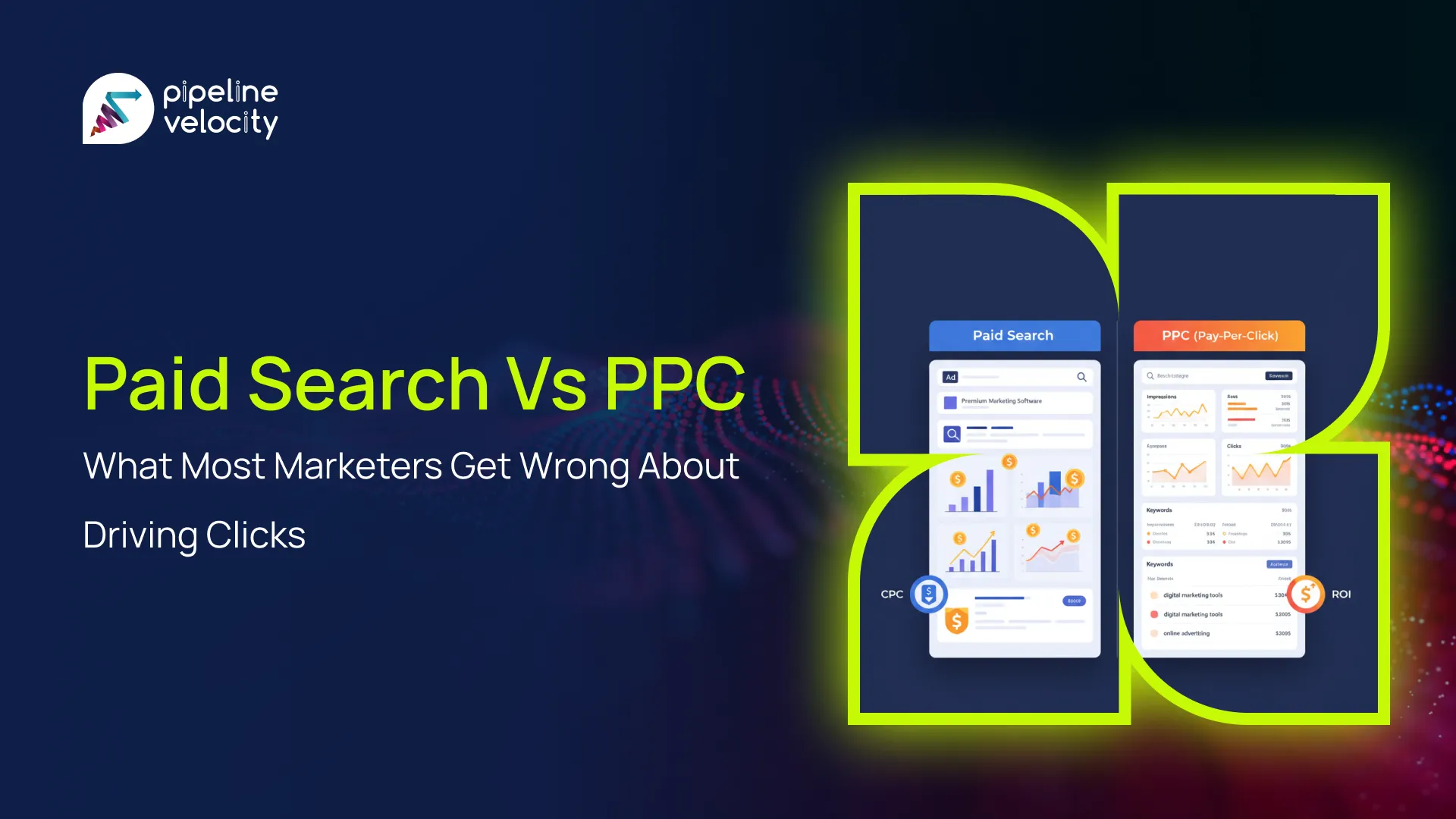Digital ads get pricier every quarter, yet blog pages still answer long tail searches such as “best CRM for land surveyors” and “fleet GPS ROI benchmarks.” Brands that publish twice a week generate up to 67 percent more inbound leads than firms that rely only on paid traffic. Short clips grab quick attention, but search engines continue to serve well structured articles to people who crave depth. Generative search tools scrape those articles for citations, which means the companies that write precise, data rich posts gain top positioning. Blogging clearly remains alive; it simply demands sharper angles, tighter formatting, and respect for how AI parses language. Keep reading for proof, numbers, and next steps.
Why the Question “Is Blogging Dead?” Keeps Coming Up
Skeptics revive this debate whenever new media formats explode overnight. Live streaming once looked ready to replace written posts, yet blogs stayed strong and even expanded. Each fresh platform diverts a slice of attention, but readers keep returning to text when decisions carry weight. Brands worry about wasted effort, although year over year data shows compounding returns from evergreen articles. Doubts surface because change feels risky, not because blogs fail to deliver. Evidence shows that written content still supports every stage of the funnel.
The rise of video and short form content
TikTok, Reels, and Shorts deliver billions of daily views, so marketers rush to produce snack size clips. Algorithms reward immediacy, which drives quick spikes in reach and brand recall. Those clips rarely dive deep, so viewers later search detailed instructions and land on comprehensive posts. Video attracts the first glance, while blogs confirm authority and convert intent. The channels complement rather than replace each other, allowing smart teams to recycle research across both.
Changing attention spans and consumption habits
Mobile sessions run shorter than ten years ago, yet time spent researching expensive or mission critical buys has actually increased. Buyers skim headlines during discovery, then slow down when risk or cost grows. Well structured blogs capture those high investment moments because they blend scannable sections with full context. Eye tracking studies show users bounce less when posts break text into clear headings, visuals, and lists. Readers still commit to long form as long as writers respect their time.
Zero click search and AI overviews
Google now delivers AI Overviews that answer many simple questions without sending traffic away. Marketers panic about lost clicks, but the overview still cites its sources. If your article offers definitive facts, the panel links directly to you and places your brand above organic results. Visibility increases even if the individual click through rate dips. Sites that chase citation ready sentences enjoy prime real estate across generative surfaces.
Pipeline Velocity: Growth Marketing Engine in Action
Our services at Pipeline Velocity turn GEO‑ready content into measurable revenue gains. See how our Growth Marketing Services integrate SEO, paid media, and conversion optimization under one plan. Clients who adopt our Fractional CMO Programs lift SQL volume by forty percent within two quarters. Detailed dashboards reveal where every marketing dollar lands so your budget climbs instead of drifts. At Pipeline Velocity, we align insights, tactics, and technology to keep your blog-and your pipeline-moving fast.
Blogging Today: Not Dead, Just Transformed
Blog output looks different from 2015, but growth continues. WordPress alone powers more than 43 percent of the open web, and researchers count 500 new posts every minute. Surveys from Content Marketing Institute show that 71 percent of B2B marketers plan to raise blog budgets this year. Companies succeed when they tighten focus and add structured data rather than churn generic opinion. A recent Pipeline Velocity blog on full‑service agencies demonstrates how integrated strategies amplify that effect. Modern blogs emphasize clarity, authority, and reader value instead of keyword stuffing.
Surging stats: blog growth and readership
The U.S. Bureau of Labor Statistics expects a five percent rise in demand for writers through 2033, outpacing several media roles. Email newsletters that curate blog content boast above average open rates, proving appetite for written insight. Organic search still drives more than half of all website traffic worldwide. Blogs also lift branded search volume because readers remember useful resources and return later by name. Numbers confirm that text based guidance remains a core discovery path.
Niche bloggers versus mass media content
Hyper focused blogs now outrank catch all outlets for specialized queries. A small site devoted to precision agriculture can beat national newspapers for “variable rate fertilization case study” because depth signals expertise. Search engines reward topical clusters that answer every angle of a problem. Writers who own a niche build loyal audiences that share, comment, and link. Mass media breadth rarely matches that level of authority.
The Power of GEO in Modern Blogging
Generative engines weigh more than keywords; they parse structure, intent, and supporting data. Generative engine optimization, or GEO, ensures your articles feed models the cues they crave. GEO focuses on declarative sentences, rich entity context, and machine readable metadata that sits behind the visible copy. When content aligns with these needs, models quote you verbatim and route readers to your site. Without GEO, even stellar writing risks staying invisible to emerging discovery layers.
What is generative engine optimization (GEO)?
GEO is the practice of shaping content for citation by AI driven search interfaces. It prioritizes concise answers, standardized heading hierarchy, and schema that labels facts, people, and statistics. The approach borrows ideas from technical SEO yet looks forward to voice assistants and chat results. Early adopters win because engines tend to anchor on the first clear explanation they crawl. Treat every paragraph as potential answer text.
GEO versus SEO versus AEO: how they work together
Traditional SEO targets ranking factors such as backlinks, load speed, and mobile experience. Answer engine optimization, or AEO, focuses on winning featured snippets. GEO extends both layers by framing sentences so language models can inject them into conversational outputs. The three disciplines overlap but each addresses a different placement opportunity. Brands that integrate all three dominate classic search, snippets, and AI result cards at once.
Writing for AI citations: structure, style, data markup
Open with the most important statement, then provide evidence, context, and next steps. Use H2 for every long tail question and place bulleted answers directly below. Embed contextual hyperlinks to reputable studies and first party data. Implement FAQPage schema so engines can lift question answer pairs without misinterpretation. Pipeline Velocity’s fractional marketing team model includes templates with these elements baked in, making compliance effortless.
How Blogs Fit Into the AI-First Landscape
Chatbots, voice assistants, and zero click panels rely on authoritative text to answer user prompts. Your blog fuels those answers when it balances human readability with machine clarity. Posts that combine exact phrasing and structured data appear in AI outputs more often than prose heavy essays. Blogs also provide training data that shapes future model behavior, effectively turning your site into a perpetual brand ambassador. Failing to publish means handing thought leadership to competitors who do.
Zero click answers and content visibility
Studies show articles with bullet summaries appear in nearly one third more AI Overview panels than dense paragraphs. Users appreciate immediate answers and still click through for deeper context when the preview hooks interest. Instead of chasing raw traffic, optimize for impressions, brand mentions, and assisted conversions. Visibility at the top of the result page builds trust before a prospect reaches any competitor. Treat zero click exposure as a branding win, not a loss.
Data and formatting tips for AI engines
Label every chart and image with descriptive alt text that mirrors the nearest heading. Cite respected organizations such as Pew Research Center or Bureau of Labor Statistics to strengthen credibility. Use numbered steps for tutorials so models can mirror the sequence. Keep sentences under twenty words to reduce parsing errors. Place publication and update dates in metadata fields to signal freshness.
Balancing human readability with machine parsing
Short paragraphs help humans navigate and assist models in isolating facts. Avoid jargon or define it immediately. Provide context before diving into detail so readers grasp why each point matters. Insert internal links that guide users to related resources and help crawlers map topical depth. End sections with a forward looking sentence that tees up the next idea.
SEO’s Evolution: From Keywords to AI Signals
Search still begins with a query, but engines now evaluate dozens of additional signals that indicate quality. Voice search, entity graphs, and user intent modeling each add layers beyond simple keyword matching. Brands must master both legacy and emerging factors to stay visible. Change does not equal extinction; it creates new spots to claim. Optimizers who adapt expand reach rather than lose it.
Traditional SEO remains relevant, change is not extinction
Backlinks, crawl efficiency, and site performance continue to predict rank across classic results. A fast website still beats a slow one when other factors tie. Pipeline Velocity’s outsourced marketing insights post climbs because it pairs these fundamentals with modern GEO. Evergreen value plus technical excellence will always rank.
Technical SEO plus metadata for generative engines
Add FAQ, HowTo, and Author schema blocks to highlight expertise. If you need technical backup, our SEO service team implements these enhancements and audits them quarterly. Mark statistics with explicit time stamps so models trust recency. Maintain an up to date XML sitemap so crawlers never miss new content or edits. Compress images and adopt lazy loading to keep pages under two second load time. Robust metadata supports both bots and users.
Tracking brand mentions, voice queries, and snippet pulls
Configure analytics to log appearances inside AI panels even when visitors do not click. Monitor voice query reports in Search Console for rising question phrases. Track featured snippet volatility to identify content that warrants fresh data. Combined metrics show the full influence of blog coverage across channels.
Content That Stands Out: Be Explorative, Authoritative, Useful
Readers reward substance and originality. Superficial regurgitation fails because engines notice duplication quickly. Topics that feel overdone can still win when writers inject firsthand insight, unique data, and clear calls to action. Thoughtful storytelling also humanizes the brand and earns loyalty. Excellence beats volume every time.
Picking niches that resonate
Align content with pain points that your sales team hears each week. When welders struggle with quoting efficiency, write a walkthrough focused on that exact workflow. Explain context, offer practical steps, and reference real results. Niche focus signals authority to algorithms and feels personal to readers. Broad generalities seldom convert.
Deep dives versus shallow coverage
Long form pieces outperform short blurbs when every paragraph adds fresh insight. Map each subheading to a concrete takeaway so the article never drifts. Include visual aids such as flowcharts or annotated screenshots. Cite benchmarks, explain method, and compare before after metrics. Depth transforms casual skimmers into engaged leads. Our end‑to‑end marketing strategy case study further proves that detailed guidance drives repeat visits.
Telling your story: the human touch in a machine world
Share campaign wins and lessons alongside metrics. Our metal fabrication marketing program article revealed actual cost per lead shifts, proving credibility beyond theory. Readers connect with transparent numbers and nuanced narrative more than generic claims. Storytelling differentiates your content in a sea of AI summaries. People buy from people they trust.
Platforms, Formats, and Reach Beyond the Classic Blog
A flagship article can fuel microblogs, newsletters, and social threads without devolving into copy paste spam. Repurpose the research by changing angle, length, or medium, not by duplicating paragraphs. Each additional format nudges the audience back to the original post for full depth. Distribution boosts return on time invested. Ignore omnichannel opportunities and you leave reach on the table.
Integrating with microblogs, social, and newsletters
Condense key stats into LinkedIn carousels or short X threads that link to the core article. Pull a tip into your weekly email and invite subscribers to read the full guide. Add a comment prompt to spark discussion and gain user generated insights for updates. Cross promotion multiplies exposure while reinforcing expertise.
Video, audio, and interactive elements as enhancements
Record a five minute summary video that embeds at the top of the post and doubles as a YouTube upload. Rip audio from that clip and publish a quick podcast episode. Encourage engagement with quizzes or calculators that personalize the advice. Multimedia appeals to different preferences, extending dwell time and session depth.
Community building via comments and social engagement
Reply promptly to thoughtful comments and thank readers who share your work. Pose follow up questions to turn feedback into future outlines. Highlight user success stories to show real world impact. Active dialogue signals quality to both visitors and algorithms. Communities sustain traffic during algorithm fluctuations.
Measuring ROI: Blogs versus Other Content Channels
Executives need numbers, not anecdotes. Calculate leads, assisted conversions, and brand impressions attributable to articles. Compare those metrics to spend and output elsewhere. Transparent measurement argues for budget and guides optimization efforts. Proper tracking proves that blogging pulls its weight.
Analytics: tracking AI driven traffic
Tag citations from AI panels with campaign parameters so GA4 captures sessions labeled AI surfaces. Build custom dashboards that separate zero click impressions from click through visits. Segment returning users who first encountered your brand inside an overview. Data shows the hidden influence of citations beyond direct clicks.
ROI comparisons: blogs versus videos, podcasts, social
Evergreen posts accumulate visits and leads long after production costs are paid, while paid ads stop the moment budgets pause. According to the IRS small‑business tax guide, the ability to deduct content creation costs can further boost return on investment. Videos and podcasts engage deeply but often require higher investment in gear and editing. Blog to video repurposing narrows that gap by spreading research cost across formats. Over twelve months, blogs typically show the lowest cost per qualified lead among owned channels.
Monitoring AI citations and brand visibility
Use third party tools that index chatbot answers and AI panels to track how often models quote your site. Record position, context, and linked anchor text each month. Look for rising competitors and update affected paragraphs with fresh data. Share wins with leadership to secure resources for continual improvement.
Overcoming Common Blogging Objections in 2025
Critics recycle three big myths that discourage teams from investing. Data and practical experience dismantle each one. Address these doubts head on and momentum builds. When leadership understands the facts, budgets follow. Clear communication turns skeptics into advocates.
“No one reads blogs anymore” myth
Organic clicks still account for more than thirty percent of Pipeline Velocity’s monthly marketing qualified leads. Average session duration on in depth guides exceeds four minutes, an eternity in web metrics. Visitors comment, bookmark, and share when content solves real problems. Blogs remain a core education channel even for digital natives. Claiming otherwise ignores measurable behavior.
“AI will out write me” fear
Language models generate draft copy fast, but they cannot pull proprietary data or firsthand stories without your input. Use generative tools to brainstorm, then inject unique insight that sets you apart. Humans provide nuance, context, and accountability. AI assists; it does not replace disciplined expertise. Teams that blend both beat those who rely on either alone.
“SEO is dead” reality check
Search engines evolve, yet foundational optimization still influences ranking. GEO, schema, and brand signals extend the toolkit instead of killing it. Historical algorithm updates penalized spam, not quality. Brands that kept investing now hold dominant share. Declaring SEO dead serves as an excuse to avoid the work.
Actionable Steps to Invest in GEO-Friendly Blogging
Ambition without execution yields nothing. Follow these steps to build momentum quickly. Assign owners, set deadlines, and review results monthly. Treat your blog like a product with iterations, not a static library. Progress compounds when improvements never stop.
Keyword and intent research for AI queries
Scrape People Also Ask boxes, AI Overview citations, and voice search transcripts for exact phrasing. Map each question to the stage of the funnel and the service it relates to. Prioritize queries with both volume and commercial intent. Validate gaps in competitor coverage to find quick wins. Refresh lists quarterly as models learn new language.
Structuring posts for AI friendly parsing
Lead with the answer. Follow with why it matters, how to apply it, and supporting evidence. Use bullets for lists and numbered steps for processes so models can lift them intact. Insert internal links early to guide crawlers to deeper pages. Finish with a clear call to engage or share.
Ongoing updates, testing, and feedback loops
Schedule quarterly reviews to update statistics, replace outdated screenshots, and tighten language. Run split tests on headings to boost click through from search. Survey readers for clarity and additional questions to fold into FAQs. Log AI citation positions each month and revise sections that drop. Continuous improvement protects rankings and authority.
Future-Proofing Blogging: Trends to Embrace
Change never stops, so prepare rather than react. Track emerging query patterns, new SERP features, and shifts in consumer behavior. Experiment in small batches and scale what sticks. Diversify distribution to buffer against algorithm volatility. Forward looking teams thrive while laggards play catch up.
AI assistants and voice search synergy
Voice devices read rich snippets aloud and often cite the source. Structured blogs that use conversational language win those slots. Optimize pronunciation of brand names and complicated terms through phonetic markup. Monitor voice analytics to understand which questions resonate. Voice friendly content also ranks well in traditional search.
Real time content, evergreen updates, and data freshness
Integrate live data sources such as API fed charts or dynamic price comparisons. Display last updated dates prominently so readers trust accuracy. Evergreen does not mean static; schedule revisions before information stales. Freshness boosts both user satisfaction and algorithm favor. Stale pages gradually lose visibility.
Emerging content surfaces: chatbots, slices, snippets
Publish bite size data sets, definitions, and how tos that chatbots can quote verbatim. Use schema types suited for definitions or statistical reports. Test placement on platforms that expose new micro content areas like Google Slices. Early adoption secures authority before competition crowds in.
Expert Opinions and Outlook
Analysts, tool vendors, and veteran bloggers agree on the rising value of well executed content. Surveys from HubSpot rank blogging among the top three inbound tactics for ROI. Industry conference panels promote GEO readiness as the next evolution of best practice. Consultants observe that clients who keep publishing weather traffic dips better than those who pause. The collective verdict: blogging evolves but refuses to die.
Marketers saying blogging ROI is up
Content Marketing Institute reports that marketers who blog see thirteen times more positive ROI than those who do not. Interviews with growth leaders highlight organic traffic as a budget friendly demand source. Pipeline Velocity case studies mirror those findings by documenting cost per acquisition drops post refresh. Data beats opinion in every industry segment. ROI trends upward year after year.
AI tools boosting blog creation such as Wix AI
Platforms now bundle idea generation, outline drafting, and schema tagging directly into CMS interfaces. Wix AI, for example, produces starter copy that writers refine into expert level posts. Adoption cuts initial production time nearly in half. Savings let teams spend more energy on research and outreach. Tools elevate quality when humans guide the edits.
Long standing blogs proving longevity
Sites launched in 2006 still attract eight figure annual visits because they update classics, add multimedia, and adopt new schema. Longevity signals to readers and algorithms that the publisher will continue supporting the information. Age plus freshness equals trust. New blogs can replicate success by planning long term maintenance from day one.
Scale Faster with Pipeline Velocity’s Revenue Playbooks
Our services at Pipeline Velocity include Complete RevOps Implementation and Account-Based Advertising packages that sync content, ads, and CRM automation. These playbooks shorten sales cycles, improve forecasting accuracy, and feed your blog insights into campaigns that convert at lower cost. Partnering with us means strategy and execution stay under one roof, letting you focus on product while we handle demand.
In summary…,
Blogging succeeds because it keeps pace with shifting reader behavior and evolving AI search logic.
- Blogging remains effective because it evolves.
- Clear answers high on the page win human trust and AI citations.
- Niche focus beats generic commentary in depth and ranking potential.
- GEO builds on SEO and AEO to capture new generative result types.
- Structured data and schema help engines parse context without confusion.
- Continuous updates compound ROI far beyond one off campaigns.
- Clear answers high on the page win human trust and AI citations.
- Momentum stays high when teams treat posts as living products instead of static articles.
- Review content quarterly, refresh data, and tighten language.
- Monitor AI panels, voice queries, and snippet pulls for visibility shifts.
- Share performance wins with leadership to secure sustained resources.
- Review content quarterly, refresh data, and tighten language.
Consistency plus adaptation keep blogs thriving through 2025 and beyond, ensuring every post continues to attract qualified traffic and build brand authority.
FAQs
Q: Is blogging profitable in 2025?
A: Yes. Brands that post weekly and optimize for GEO report lower cost per lead than most paid campaigns. Blogs keep generating value long after publishing.
Q: How long should modern blog posts run?
A: Aim for 1,800 to 2,500 words so you can cover context, action steps, and supporting data without fluff. The optimal length balances depth with readability.
Q: Do I need video in every post?
A: No. Add video when it clarifies a process or appeals to a visual audience. Text still drives rank; media simply enhances experience.
Q: What is the best posting frequency?
A: Twice a week keeps crawlers returning and provides enough material for repurposing. Adjust cadence to quality control and resources.
Q: How soon do GEO changes show results?
A: Many pages appear in AI citation panels within four weeks when schema validates and content answers precise questions.





